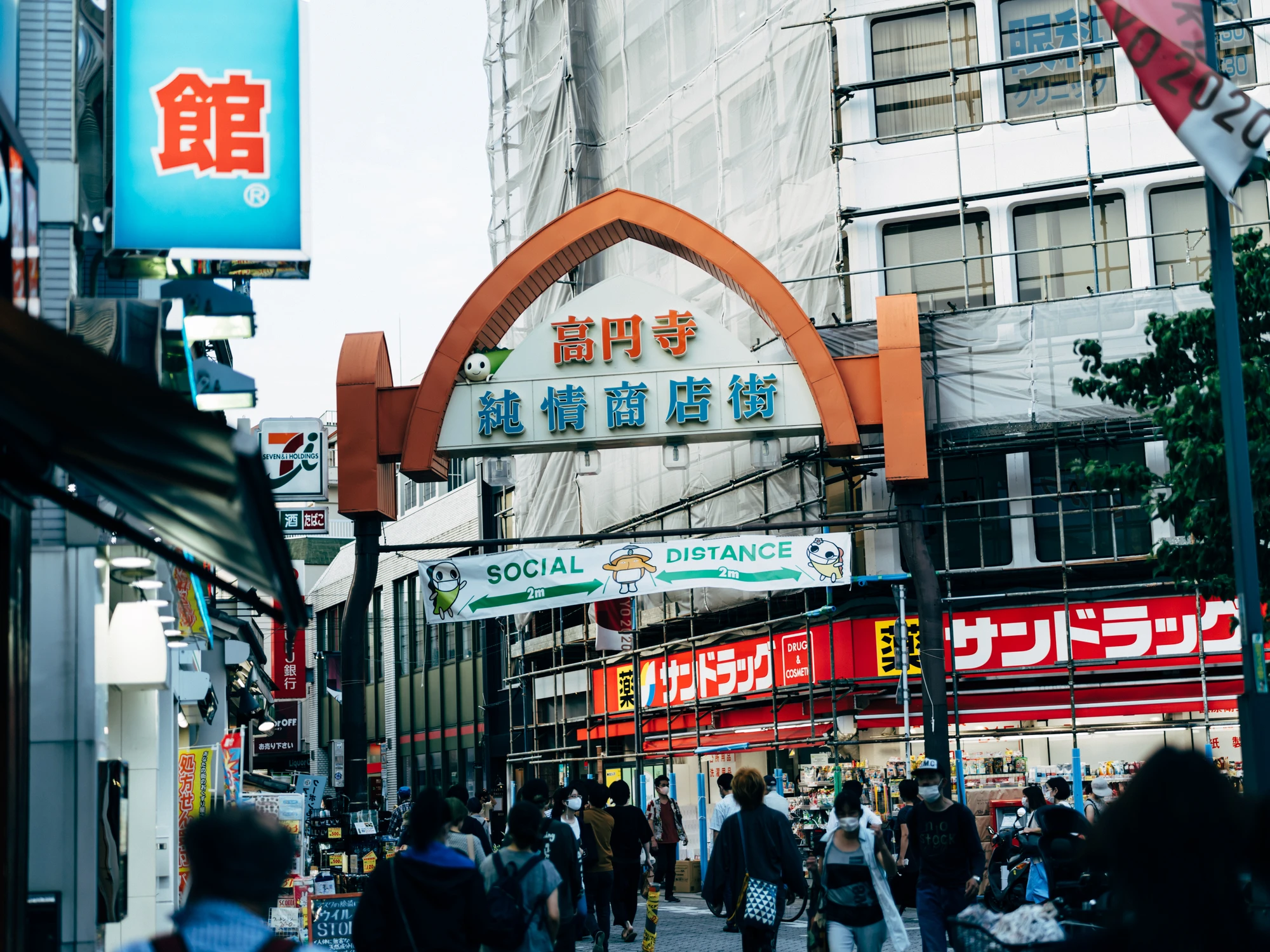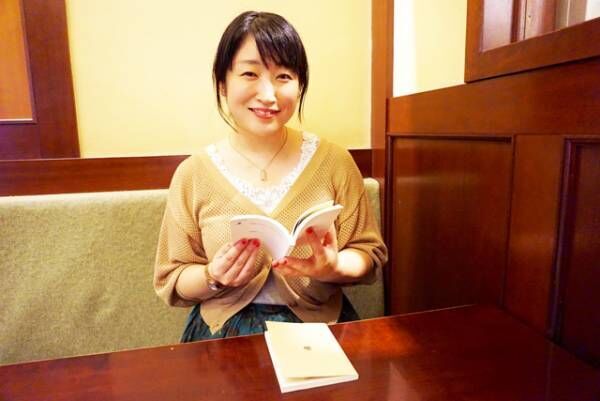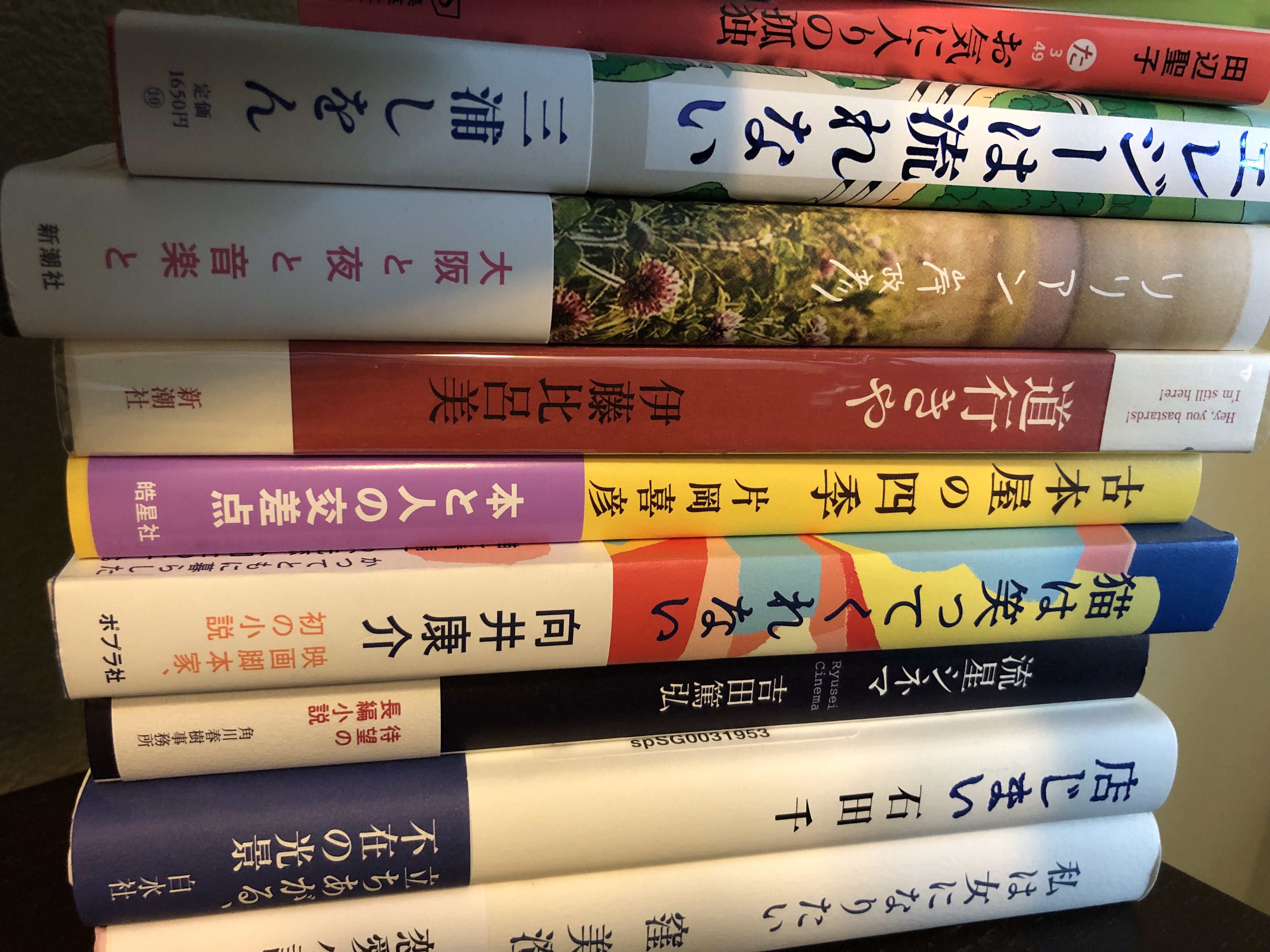高円寺純情商店街 ねじめ正一
Koenji Junjo Shopping Street by Shoichi Nejime
This novel, first published in 1989, won the 101st Naoki Prize that year, and has proved so popular that the name of the shopping street Nejime wrote about was officially changed from Koenji Ginza Shotengai to Koenji Junjo (Pure Heart) Shotengai after the title of his novel.

The arch at one end of the Koenji Junjo Shotengai Source: kosugiyu.co.jp
Writing in the third person, Nejime describes his parents’ store and their neighbors in Koenji in the early 1960s, and although the six stories are told with great humor, this is not one of those rose-colored recollections of simpler times. In these stories, kittens born to stray cats are drowned, stores battle cockroaches and flies, families intervene when their sons get involved with the wrong women, and the public bathhouse is a place to get clean, not a place to soak.

A map of the Koenji Shotengai in 1959 and 2021. Source: www.kouenji.or.jp
They were also prey to the elements in a way that we are not. Nejime’s family ran a store selling dried goods like katsuobushi (smoked and fermented tuna that his father shaved into thin flakes), konyaku, kombu, salt, dried fish and black sugar. This meant that Nejime’s mother spent the summer months battling humidity, which was fatal for the sheets of nori (seaweed) that they sold. You knew summer had arrived because the fly paper (bought in bulk) was hung from the ceiling. Mold grew on the katsuobushi—a pretty pink mold on the good quality katsuobushi and a black mold on the lower quality kind (the prettier the mold, the higher quality the katsuobushi). The winter brought relief to Nejime’s family, but meant chilblains and frostbite for the fishmonger and his family next door.
In “Midwinter Goldfish,” Nejime describes a fire that breaks out in the neighborhood. Storeowners worked together to put out the fire, and when they finally do arrive, the firemen are greeted with alarm rather than relief. The cracks in these old wooden buildings mean that the water they spray without discrimination could destroy the stock of Nejime’s family’s dried goods store, not to mention the futon shop and clothing shop. Tubs of water kept near the door in case of fire were also home to goldfish, which prevented mosquito larva from proliferating. The goldfish were tossed onto the fire along with the water, and at the end of this vignette, Nejime and his friend try to rescue any that are still alive. In another story, they try to hide the kittens born to a stray cat until they are too old to easily drown.

Inari-yu, a sento in Kita-ku, Tokyo, that dates back to 1915. The organization Sento & Neighborhood is currently working to restore this sento, which has been registered as a national tangible cultural property in Japan and as an endangered cultural site by the World Monuments Fund. Source: Tokyo Sento
“Mt. Fuji’s Sweat” describes Nejime’s very reluctant trip to the sento (public bathhouse). He had managed to avoid bathing for 10 days while the bath at home was being renovated, but finally even he had to recognize that he smelled. This is no romantic picture of a sento—this is a place where people go to get clean in a time when many homes didn’t have baths. Worst of all, this was the sento run by his classmate’s family, and the classmate herself is sitting at the bandai, collecting money, with a clear view into both the men’s and women’s baths. He not only has to avoid her gaze as he strips down, but has to navigate the steamy, slippery bath room filled with naked bodies of all shapes and sizes. It’s so crowded that the water the men toss over their heads splashes against him. Nejime finally finds an empty faucet, only to realize that the reason this place is unoccupied is that the drains run right next to it, sending an endless stream of hair and soap scum over his feet. An old man pushes his way through and removes his dentures to clean in the wash basin at Nejime’s feet, leaving bits of the nori he’d had for dinner behind in the water. Little kids dash in and jump like cannonballs into the paths. I loved this picture of the sento because it reminded me that they are (or at least were) real places and not just historical buildings to be saved from destruction or places where everyone is over 80.

A woman sitting at the bandai at Inari-yu Source: Tokyo Sento
A reviewer of this book recollected that he had moved to Koenji because the poet Chuya Nakahara had lived there (Nejime is also a poet), but after actually living there for himself, he realized that this was hardly a quiet neighborhood of poets. It is now known for its secondhand clothing shops, its bars, its “rock-n-roll” atmosphere. People live, play and work here, with all the messiness that goes with that. The reviewer wrote that if you go to the plaza by the north exit of Koenji Station at night, you will hear old men and teenagers hurling abuse at each other, novice musicians singing about loneliness, and foreigners getting drunk, all to the backdrop of the thud and grind of skateboarders. Judging from Nejime’s book, it has not changed much from his time.
Kosugiyu, a sento in Koenji, has a gorgeous website that is worth a look if only for the photography. They also have in-depth interviews with several people who work in the Koenji area, including Suguru Karino, whose bookstore/izakaya I previously wrote about. There is also an interview with Miho Rayson, who used to be an ordinary company employee but became so besotted with Kosiguyu that she quit her job to work there. And if you want to get involved in saving sento, you can join Sento & Neighborhood, a non-profit organization that restores sento and does other outreach work.
 「出会い系サイトで70人と実際に会ってその人に合いそうな本をすすめまくった1年間のこと」、花田菜々子
「出会い系サイトで70人と実際に会ってその人に合いそうな本をすすめまくった1年間のこと」、花田菜々子


Recent Comments